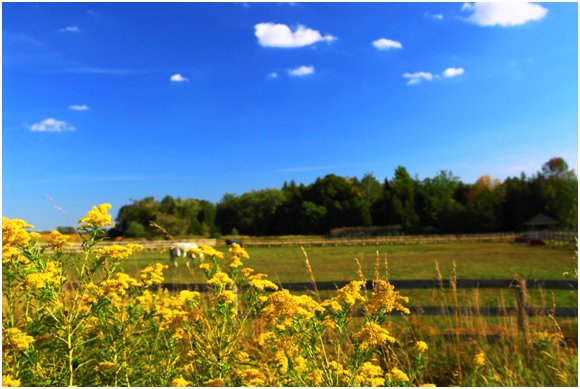Yesterday morning I woke up feeling under the weather. Stuffy nose? Check. Runny nose? Check. Sinus pressure? Check. Sneezing? Check. Is it August? Check. Aaagh, it must be ragweed season again!
I have allergic rhinitis, which is inflammation of my nose from exposure to something I’m allergic to. Airborne pollens can stick to the inside of your nose and throat and trigger an allergic reaction, which used to be called hay fever because doctors associated it with plant pollens like hay.
Allergic rhinitis can be either seasonal or perennial (year-round). Seasonal allergic rhinitis is usually triggered by plant-based pollens, which are identified by the time of year that your symptoms flare up, while perennial symptoms are often from molds and pet dander.
Grasses and trees like birch, oak, elm, and maple release their pollens in the spring and early summer, while weeds like ragweed produce their pollen in late summer and early fall. Ragweed is related to marigolds, chrysanthemums, and daisies, and is one of the most common seasonal allergies, creating a fine powdery pollen that can be carried for hundreds of miles on the wind.
To treat my ragweed allergy, what I take for it depends on which symptoms are making me miserable. Sometimes my eyes itch and water, but usually my nose is both running constantly, called rhinorrhea, and also is congested. This year I have sneezing, nasal congestion, rhinorrhea and sinus pressure.
Allergic rhinitis is triggered by a chemical called histamine. Your body stores histamine in special cells called mast cells, and when it recognizes pollen or cat dander as something you are allergic to, the mast cells in your nose open up and release histamine, creating the misery of your allergic reaction.
Medicines called mast cell stabilizers can BLOCK this chain reaction from starting by keeping histamine safely locked up inside your mast cells. If my eyes get itchy and are watering, my favorite remedy is prescription-strength over the counter (OTC) ketotifen eye drops. Ketotifen works not only as a mast cell stabilizer but is an antihistamine, too, making it able to both prevent and relieve allergic reactions. Once sold as the prescription drug Zatidor®, ketotifen is available as a generic and Alaway® eye drops.
Steroid nose sprays decrease inflammation and are the most effective way to treat allergic symptoms, especially those that involve the nose, like sneezing, sniffling and stuffiness. There are several agents available without a prescription.
Oral antihistamines can be used either with or without eye drops or steroid nasal sprays, and can relieve all of your allergic rhinitis symptoms. Diphenhydramine (Benadryl®) is one of the most effective antihistamines available OTC, but has to be taken every 6 hours and causes drowsiness. If you need a medicine that won’t cause drowsiness, try loratadine (Claritin®) or cetirizine (Zyrtec®), which last all day.
Because my nose is often both running and congested at the same time, I prefer an older combination of antihistamine and decongestant called Actifed®. Actifed® contains triprolidine plus pseudoephedrine (the original formulation of Sudafed®) and is available as a generic. Triprolidine dries up my watery eyes and runny nose without causing drowsiness, and the pseudoephedrine eases my stuffy nose.
5 Tips on Taking Allergy Medicine:
- The most effective OTC medication for allergic rhinitis is steroid nose spray.
For a runny nose, stuffy nose and sneezing, try a steroid nasal spray like Nasacort Allergy 24-Hr® (triamcinolone), Flonase Allergy Relief® (fluticasone), and Rhinocort® (budesonide). Be patient, though; it may take several days to get full relief. Until then, take an oral antihistamine along with your nasal spray.
- Ketotifen eye drops work well for itchy or watery eyes.
Ketotifen (Alaway®) works both as an antihistamine and mast cell stabilizer. It’s available as an inexpensive generic and can be used safely even in children as young as 3 years old.
- If you have a runny nose, avoid using an oral decongestant.
A decongestant relieves a stuffy nose but often makes a runny nose even worse. Try an antihistamine instead, or a combination antihistamine/decongestant purchased from the pharmacy counter.
- Don’t waste your money on phenylephrine (Sudafed PE®).
Phenylephrine’s side effects limit the dose allowed by the Food and Drug Administration (FDA) to one that’s only 1/3 as effective as pseudoephedrine. Purchase pseudoephedrine from the pharmacy counter, either alone or with an antihistamine.
- Limit your use of decongestant sprays.
Avoid using any decongestant nasal sprays for more than 2-3 days at a time to avoid triggering rebound (worsening of your stuffy nose) symptoms.


